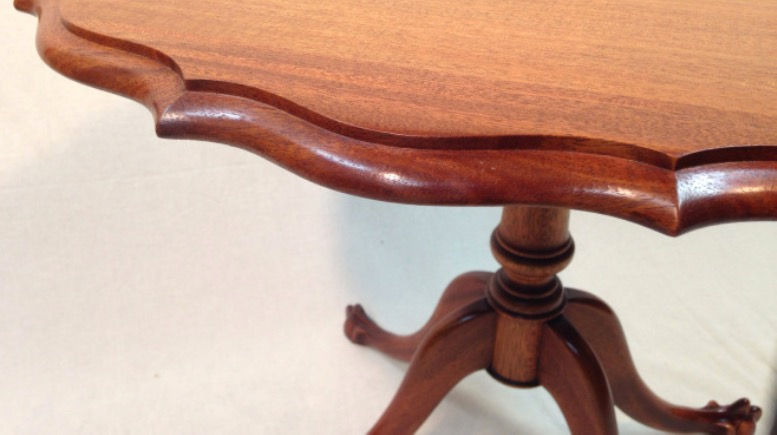19th Century Tonk Piano Stool
- Mr. Stafford

- Feb 4, 2014
- 3 min read
This late 19th century piece was one of the first projects I was commissioned to restore.
Max Tonk, (b. Berlin 1851) moved to Chicago with his family in 1857. He learned to carve many different types of wood and he worked in his uncle’s piano and organ factory, carving embellishments for the instruments. In 1873, he opened his own carving shop (Tonk Manufacturing), supplying the Chicago cabinet industry with ornate carvings for cabinets and caskets.

In the 1880’s, Tonk Manufacturing began to make swivel seat piano stools for the growing musical industry. Tonk became the largest maker of piano stools in the country, making the majority of swivel seat stools on the market; including the ubiquitous round stool with claw and ball feet. Tonk Manufacturing was eventually headed by three generations of Tonks.
Many have attributed the term “Honky-Tonk” to the Tonk brothers, William and Max. The earliest known use of the term, in print, is in a report in the Fort Worth Daily Gazette, dated January 24, 1889, stating that a “petition to the council is being circulated for signatures, asking that the Honky Tonk theater on Main Street be reopened.” Since the Tonk Manufacturing Company was established in 1873, such an etymology is possible. However, several other origin stories exist for the term, so, perhaps, we’ll never know the true origin.
The above photo shows an example of an improper glue repair. The glues which were used in the nineteenth century were all protein glues (primarily animal hide glues). Hide glues can be reconstituted, as far as we know, indefinitely. There are examples of hide glues, from several thousand years ago, being reconstituted and used as if they were freshly made. This is most commonly achieved by using a combination of heat and moisture; often by applying moist, hot towels or placing the item in front of the shop stove or fireplace.
Hide glue, no matter its age, will rejoin itself with new hide glue. PVA Glues (Polyvinyl Acetate) such as white or yellow carpenter’s glue or Elmer’s glue, do not adhere well to themselves at all. PVA glues usually require that all traces of previous glues are removed, exposing bare wood, before optimum bonding can occur. This repair appears to have been re-glued with PVA several times; all of which failed due to poor preparation. PVA glue was not not invented until 1912 and was not put into commercial use for a number of years later.
Having been properly prepared and re-glued with freshly cooked, hot hide glue, it will be next to impossible to separate these joints again during use; however, just add moist heat (or vinegar in some cases) and the glue will release it’s grip happily and willingly. That is a unique feature of protein glues; they are some of the strongest glues in existence, yet they allow for easy disassembly when needed.
Such projects are a great source of pleasure for me and seem to provide a fair amount of joy and satisfaction for my customers, but I believe that it is important to remember that such things are only temporary. Someday, all of the things of this world will be gone and God will create a new world
“And I saw a new heaven and a new earth: for the first heaven and the first earth were passed away; and there was no more sea. {2} And I John saw the holy city, new Jerusalem, coming down from God out of heaven, prepared as a bride adorned for her husband.” (Revelation 21:1-2)
What a magnificent thing that will be to witness!
Click the image below if you are interested in seeing footage of the restoration process of this stool.




















Comments